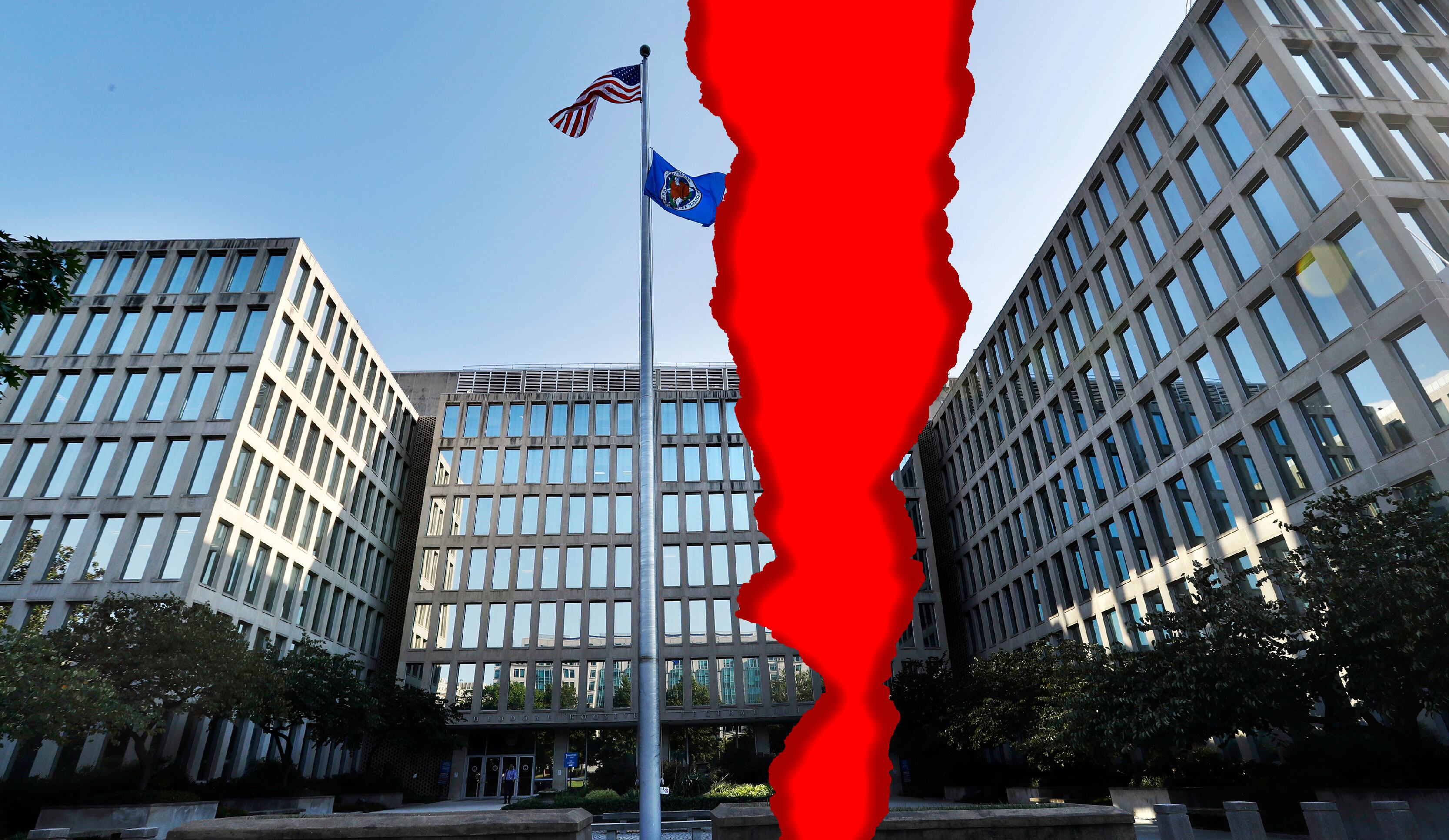The Trump administration has doubled down on its recommendation that the Office of Personnel Management be dismantled and its pieces placed among other executive agencies.
“I firmly believe that the greatest risk we have is doing nothing,” OPM acting-Director Margaret Weichert said at a May 14 press roundtable.
The proposal, first introduced in the White House’s June 2018 reorganization plan, would move OPM’s National Background Investigation Bureau to the Department of Defense; retirement, the agency’s health insurance and human resources services into the General Services Administration; and its legislative policy under the Executive Office of the President.
According to OPM reorganization documents, the NBIB’s $1.3 billion budget accounts for approximately 81 percent of OPM’s revolving fund, which will “dramatically undercut OPM’s ability to operate and maintain the systems that support the federal civilian workforce” when it leaves the agency.
President Donald Trump ordered the move of NBIB to DoD in an April 2019 executive order.
The proposed reorganization, OPM officials argue, could save between $11 million and $37 million per year due to the centralization and reduction of duplication that could result from transferring operations to GSA.
According to Weichert, the IT systems that support NBIB are also used to manage federal retirement services, meaning that the loss of NBIB could have difficult financial implications for the agency unless OPM services are merged with GSA.
“Fairly old infrastructure that supports retirement services and supports NBIB [is] effectively the same shared infrastructure, and so just technologically there are challenges there,” said Weichert. “Over time the revolving fund contributions of NBIB in recent history have essentially enabled further under investment in retiring that technology debt.”
That transition could also help provide necessary expertise to combat OPM’s aging IT infrastructure and prevent another breach like the one experienced in 2015, the documents argue.
According to Weichert, GSA has “experience and proven capabilities” for IT acquisition and modernization, which could help OPM get out of its cycle of simply maintaining aging systems.
But American Federation of Government Employees National President J. David Cox. Sr. said in a statement that the financial troubles facing OPM are of the administration’s own making:
“By divesting OPM of its responsibility to conduct background investigations on federal employees and contractors, the Trump administration has created the crisis it is now using to justify abolishing OPM. This administration is clearly following a ‘ready, shoot, aim’ strategy built on misleading everyone about its motivations. Congress must prevent this reckless move in order to protect OPM the institution from this irresponsible plan.”
Experts have questioned whether the Trump administration even has the necessary authorities to dismantle OPM and move its offices elsewhere, but the document argues that some of the change is possible under current distribution of power, though some of those changes could be “administratively burdensome” without the aid of legislation.
Critics of the plan have called it an attempt to politicize the civil service by moving OPM operations more closely under White House authority, and some members of Congress have called on their fellows to use fiscal year 2020 budget documents to forbid the use of funding to implement the reorganization.
But Weichert said that transitioning OPM into GSA legislatively would be the simplest way to address problems that will make it harder and harder for OPM to operate.
The administration plans to propose a straightforward legislative fix to Congress on Friday, May 17, that would take a majority of OPM’s operations and turn them into a service under GSA, with much the same structure as the Federal Acquisition Service. The combination would better enable OPM and GSA to work on programs together where their skills overlap, according to Weichert.
Current OPM employees would then be transitioned to the new service, with potentially a smaller workforce, though the administration has no goal of shrinking the workforce at this time.
“The vision, if we got the legislative authority, would be a lift and shift,” said Weichert.
Meanwhile, the legislation would create three positions in the Office of Management and Budget that would spearhead legislative proposals targeted at the whole government workforce.
According to Weichert, OPM today doesn’t even address the workforce fully, as it is officially designed to cover Title 5 employees, which has led to the creation of special authorities and workarounds to manage employees covered by other titles.
“Despite everything, I am still hopeful, if not optimistic, that Congress will engage with us on finding solutions here, because at the end of the day, we can’t fail to deliver here,” said Weichert, who warned that if change wasn’t implemented soon, the agency would be forced to squeeze employee-oriented missions to make ends meet.
“I can’t get much more blood out of the stone that is employee services, but that is the place that will probably get squeezed. We need to be pro employee throughout that change or we will not get another at bat.”
If Congress doesn’t end up supporting the transition with legislation, Weichert said that the administration will look for existing authorities to outsource work to GSA that it is more suited for or for OPM to partner with GSA on programs that both agencies already do work in.
Weichert promised to go over the plan in more detail at her planned testimony in front of the House Oversight and Reform Committee May 21.
Jessie Bur covers federal IT and management.





